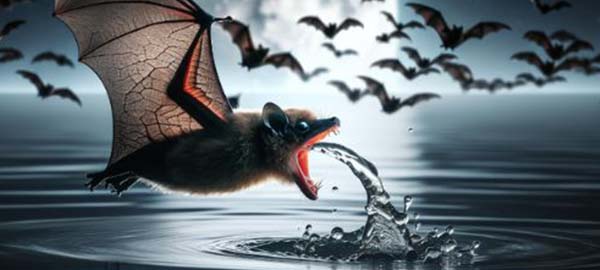Do Bats Migrate?
As mysterious creatures of the night, bats often evoke curiosity. One intriguing question that arises is: Do Bats Migrate?
Unfortunately the answer isn’t Black or White. While some species migrate to find warmer climates and abundant food sources as temperatures drop, other colonies may hibernate or stay in the same area year-round.
Whether bats migrate or hibernate depends on the species, climate, and availability of resources; others have different methods of surviving the winter.
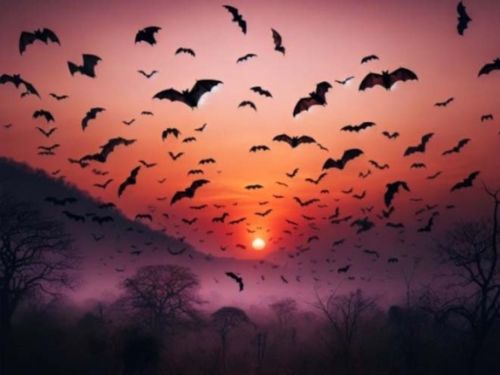
Seasonal Journeys: Understanding Bat Migration
As seasons change and temperatures drop, many bats embark on a remarkable journey. This migration is a survival strategy, a search for warmer climates, and abundant food sources. But not all bats take to the skies; some choose to hibernate.
The Great Trek: Which Bats Take Flight?
Migration is a strategy employed by various bat species, including Hoary bats, Mexican free-tailed bats, and Silver-haired bats. These species undertake significant journeys in response to the scarcity of insects, their primary food source, in cold temperatures.
These migratory bats are mostly tree roosters, who, unlike their cave-dwelling counterparts, must migrate to warmer areas as their leafy homes offer little protection from winter’s chill.

Timing Their Takeoff:
Environmental changes influence the onset of bat migration, primarily the drop in temperatures as winter approaches. For most species, migration begins in the fall, typically from August to October.
This departure is a calculated move, perfectly aligned with the decreasing insect availability in their summer habitats; it’s not a random decision. The arrival of bats in their winter habitats can be a spectacle. For instance, in certain areas of Africa, bats begin turning up in November and December, marking the end of their migratory journey.
While migration can be challenging for bats, it is a necessary part of their life cycle, ensuring their survival during the harsh winter months.
Why Wing It South?
Bats migrate primarily in search of food, which becomes scarce as temperatures drop in Northern regions. As bats have high energy expenditure during flight, they must consume large amounts of food, a need that becomes even more imperative when they’re expecting offspring.
This quest for sustenance drives them to warmer locations, where insects, their primary food source, are abundant. With bats flying in search of these warmer locations, they can continue to thrive and support their growing families.
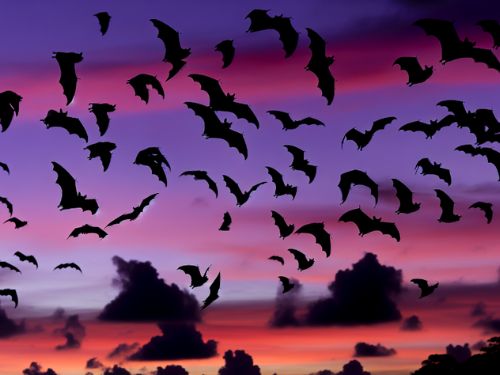
Hibernation Habits: How Bats Weather the Winter
As winter sets in and food becomes scarce, some bats opt for a different survival strategy: hibernation. These hibernating bats undergo significant physiological changes, reducing their heart rates and body temperatures to conserve energy. In this deep sleep state, they rely on their fat stores to survive the long winter.
We will explore these hibernation habits further, starting with regulating bats’ body temperature during this period.
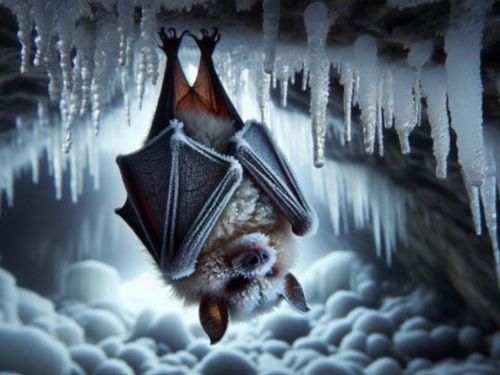
Cozy Quarters: Where Hibernating Bats Hide Out
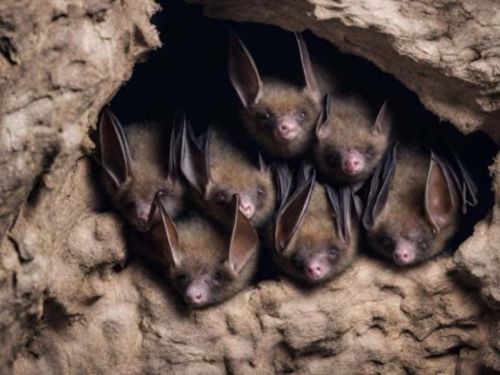
When it comes to choosing their winter homes, bats are quite picky. They seek out quiet, undisturbed places that maintain ideal temperature and humidity conditions for efficient hibernation. Common hibernation locations for bats include natural formations like caves and rock crevices, as well as human structures with suitable temperatures.
Each species has its preferred location; the big brown bat tends to hibernate in caves and human structures where temperatures are just above freezing, helping them conserve energy. These quarters provide bats with the tenable conditions to weather the winter.
Metabolic Rate During Hibernation
Hibernation is a period of energy conservation for bats. In this state, they drop their metabolic rate drastically, with their heart rates falling from a standard 200-300 beats per minute to as low as 9-10 beats per minute. This dramatic reduction in metabolic activity allows bats to achieve energy savings of approximately 98%, indicating the scaled-back energy requirements during this period.
Contrary to common belief, hibernation isn’t a continuous slumber but a cycle of torpor interspersed with brief periods of arousal, enabling bats to rewarm and temporarily reactivate their metabolism. When bats hibernate throughout the winter months, they rely on accumulated fat stores, a survival adaptation that reduces energy costs by 98%.
The Impact of Bat Movements on Humans
While the migratory and hibernation habits of bats are fascinating, they also directly impact humans. These seasonal movements can create unique situations, from increased bat activity in certain areas to potential home disturbances.
Encountering Bats in Transit
Bats are not confined to forests and caves; their search for food and suitable habitats can lead them into human-populated areas. Bats may travel into these areas during their migration, increasing the likelihood of encounters. Some bat species have even adapted to human environments, often using buildings for shelter in transit, which increases their interactions with humans.
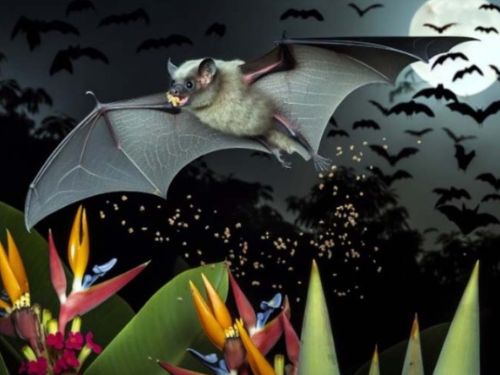
Home Intruders: Dealing with a Bat Problem

While bats can be fascinating creatures to observe, they can also become unwelcome guests when they decide to set up residence in our homes. If you hear scratching or rustling sounds, notice guano accumulation, or find oily stains near entry points in your home, these could be signs of a bat colony.
If bats establish residence in your property, it’s advisable to contact professional services like Texas Bat Solutions to handle the issue safely and humanely.
Threats to Bat Migration and Hibernation
Having explored the fascinating behaviors of bats, it’s equally important to highlight the threats they encounter. From habitat loss and climate change to diseases and human-made hazards, migratory and hibernating bats face numerous challenges. Understanding these threats is the first step towards effective conservation efforts.
How Climate Change Affects Bats
Climate change significantly threatens bats, altering their migration patterns and hibernation behaviors. Changes in plant phenology or insect populations can force bats to adjust their migration routes, possibly increasing their contact with humans. However, tracking how bats respond to these climate changes is challenging due to their longevity and the complexity of their hibernation behaviors.
These changes not only disrupt the life cycle of bats but also pose a threat to their survival. More frequent and severe weather events can lead to mass mortality in bats, especially during hibernation when they are already under energetic stress. Combatting climate change is about safeguarding our environment and preserving the multitude of species, including bats, that inhabit it.
Protecting Winged Wanderers
Protecting bats calls for a multifaceted approach, including:
- Monitoring bat populations to track changes in behaviors in response to climate changes.
- Implementing conservation actions to protect bat habitats.
- Conducting empirical studies to evaluate the ecosystem services that bats provide.

Implementing conservation actions, such as creating artificial water sources in drought-prone regions, is a mitigation strategy to support bat populations during extreme weather conditions. The fight for bat conservation is a shared responsibility, and every step, no matter how small, can make a difference in safeguarding these winged wanderers.
Frequently Asked Questions
Where Do Bats Go in Winter?
Bats go to caves, mines, and other structures with ideal temperatures and humidity for hibernation during the winter. These places are called hibernacula.
What Month Do Bats Migrate?
Bats begin their migration in October and November when the cold weather drives the insects away, and they emerge from hibernation in March.
Do Bats Come Back To The Same Place?
Yes, bats usually return to the same place every night and are known to return to the same roosts year after year. This behavior demonstrates their loyalty to their roosts
Where Do Bats Hibernate?
Bats hibernate in natural formations such as caves and rock crevices, as well as human-made structures with suitable ambient temperatures. They seek out locations that provide the right conditions for their winter rest.
How Do Bats Regulate Their Body Temperature During Hibernation?
Bats regulate their body temperature during hibernation by lowering it to near freezing, which aligns closely with the ambient temperature of their surroundings. This allows them to conserve energy effectively.
RELATED POSTS
Why Do Bats Fly in Circles?
Why Do Bats Fly in Circles? This distinct flying pattern is more than an aerial quirk; it's essential for their survival. Bats use circular flight patterns as a part of their sophisticated echolocation(read more)
Do Bats Drink Water?
Do Bats Drink Water? While we often associate bats with their affinity for insects, fruit, or even blood... a question lingers in the realm of curiosity: Do Bats Drink Water? Yes. Bats drink water and they require substantial amounts for survival, sometimes up to 50% of their body weight daily.
Does Home Insurance Cover Bat Removal?
Facing a bat infestation, homeowners need to know: does home insurance cover bat removal? This article directly answers that question, detailing what aspects of bat removal, if any, are covered by your home insurance policy and what costs you may need to handle yourself.


